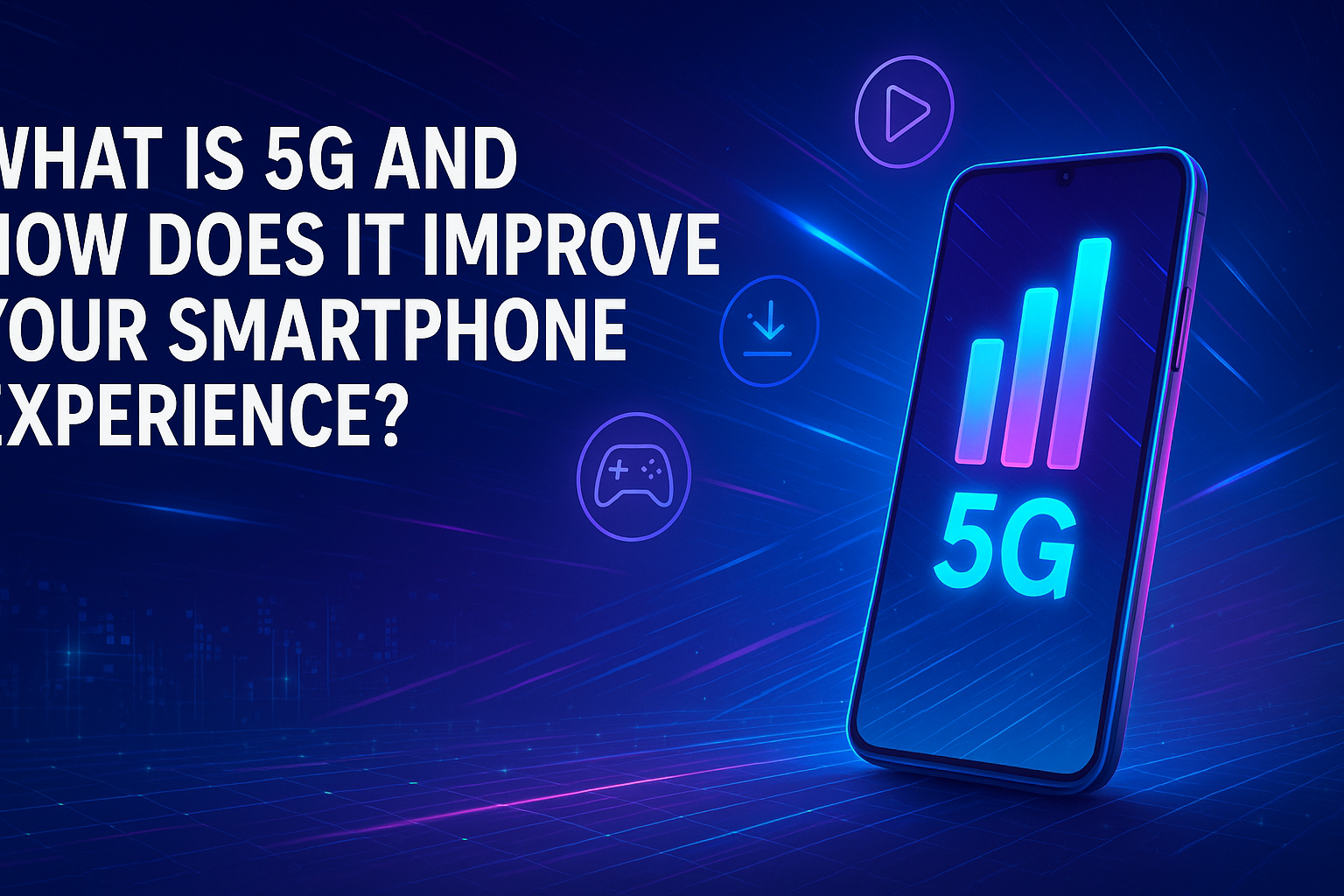Okay, let’s get real.
You’ve probably seen it by now — “5G” splashed across your phone screen or shouted from every tech ad like it’s some sort of digital messiah. Faster, smarter, sleeker, apparently the next big thing since… well, since the last big thing. But what is 5G, really? And how is it actually going to change the way you scroll, stream, tap, swipe, or—let’s be honest—doomscroll at 3AM?
Let’s pull back the curtain and dive in. No fluff (well, maybe a little). Just the good stuff — with a few tangents, like that one time I couldn’t stream a single episode of The Bear on a crowded subway. Thanks, 4G. You tried.
So… What Is 5G?
Imagine upgrading from a bike with a squeaky chain to a Tesla that can practically drive itself. That’s kinda what 5G feels like. Technically, it’s the fifth generation of mobile network technology—built to replace, or at least heavily outperform, its predecessor: 4G LTE. (Remember when that was a big deal?)
Now, it’s not just faster internet, though yes, it’s ridiculously fast. 5G uses a combination of low-band, mid-band, and high-band frequencies (the last one sometimes called “millimeter wave” – sounds cool, but basically it’s super-fast, short-range signal that struggles with, like, walls and rain… not ideal, but still useful).
Also, if you’re into the nuts and bolts: 5G uses something called OFDM (Orthogonal Frequency Division Multiplexing) — which, admittedly, sounds like a spell from Harry Potter, but it’s just a clever way to cram more data into less space.
Another fun thing? Small cells. Think mini cell towers peppered across cities like confetti—except the kind that makes your phone light up like a spaceship. Plus, there’s network slicing. Imagine having a VIP line at the airport, but for your data. That’s network slicing. Your app gets what it needs, no interruptions from your neighbor’s Fortnite binge.
How 5G Feels on Your Smartphone (Spoiler: It’s Wild)
Speed That Makes You Question Reality
Let’s say you’re on the beach — and not just pretending to work remotely — and you want to download a full season of Stranger Things. With 4G? Go grab a drink and a nap. With 5G? Blink, and it’s done. Speeds can hit 10–20 Gbps (though let’s be honest — in real life, you’ll probably get a few hundred Mbps to 1 Gbps. Still, insane).
Latency? Practically Nonexistent
You ever tapped something and then waited… and waited… and waited for it to respond? Yeah, that’s latency. With 5G, latency drops to 1 millisecond. One. Millisecond. That’s like—how long it takes to blink halfway. Suddenly, cloud gaming, video calls, and even remote surgery don’t feel like sci-fi. They’re real. They’re now.
So Many Devices, So Little Space
This is where 5G kinda blows minds. It can handle up to 1 million connected devices per square kilometer. Wrap your head around that. That’s your phone, your smartwatch, your neighbor’s smart toaster, your fridge, your cat’s collar. All online. All at once. Without collapse. (Though emotionally, we might be another story.)
Reliable Like That One Friend Who Shows Up Early
Let’s be honest: 4G is solid. But 5G? It’s the overachiever. It’s designed to avoid dropped calls, glitchy streams, and that infuriating “no service” icon that always pops up when you need directions the most. Urban? Rural? Stadium? It adapts.
Real-World Benefits: Why It Actually Matters for You
This is the meat of it. What does 5G actually mean for your day-to-day? Here’s the lowdown:
- Ultra-Smooth Streaming: 4K? Easy. 8K? Sure. No more buffering circles. Just pure visual bliss.
- Gaming Feels Like Magic: Whether it’s Call of Duty: Mobile or Genshin Impact, lag becomes ancient history.
- AR & VR That Don’t Suck: Those clunky experiences are over. 5G breathes life into virtual reality, making it feel weirdly real.
- Battery? Surprisingly Better: Seems counterintuitive, but yes — AI-integrated 5G tech actually uses resources more efficiently.
- Future-Proof Phones: Buying a 5G phone in 2025? Smart move. You’re ready for what’s next (whatever that ends up being).
What You’ll Need to Get On Board
Look, 5G isn’t automatic. You’ll need a few things:
- A 5G-capable smartphone (think: Samsung Galaxy S24, iPhone 15 Pro Max, Google Pixel 9 – yeah, it’s 2025, can you believe?)
- A mobile plan that includes 5G — most major carriers do, but check.
- Patience — coverage is still expanding. Cities? You’re golden. Rural areas? Getting there.
Also, pro tip: don’t expect miracles if you’re in the basement of a concrete building. Even 5G has limits. Physics is rude like that.
FAQ: 5G Edition
Q: Is 5G worth the hype?
A: Short answer: Yeah. Long answer: Only if you value speed, performance, and feeling like you’re living in 2030.
Q: Do I need to upgrade my phone?
A: Yes. If your phone doesn’t say “5G” somewhere in the settings — time to say goodbye.
Q: Will 5G make my data cap explode?
A: Possibly. Fast data = more usage. Keep an eye on that meter or splurge on unlimited.
Q: Is 5G dangerous?
A: Nope. Despite the conspiracy nonsense, 5G is safe. It’s been vetted by science, not YouTube comment sections.
Wrapping It Up: 5G Isn’t Coming — It’s Already Here
This isn’t about a trend or a buzzword. It’s a tectonic shift in how we connect. The speed is outrageous. The latency is nearly mythical. The possibilities? Let’s just say they’re enough to make a grown tech nerd cry.
So whether you’re a power user or just someone who wants to FaceTime without your screen freezing on the worst possible frame — 5G is for you.
Upgrade when you’re ready. Or better yet — before your apps start to outgrow your phone. Because they will. They always do.









